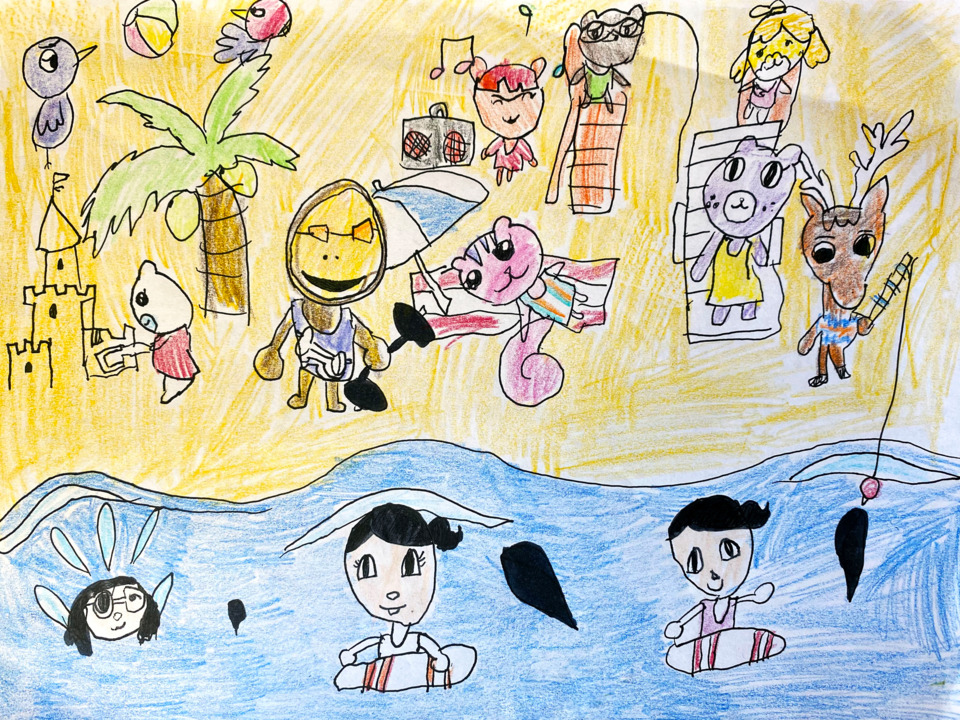
Derek Yu is a visual artist, game designer, and sometimes writer, best known for creating the Spelunky series of games. For many years, he was also the Editor-in-Chief of TIGSource, the independent games website and community. He goes by @mossmouth on Twitter.
It was a busy year for me workwise, trying to get Spelunky 2 out the door with BlitWorks and our other collaborators, but I can’t really stop playing video games, can I?! That said, I’m still catching up on games from the last century, let alone this year, so I can’t realistically make a Top 10 list of games that were released in 2020. You’ll have to settle, instead, for a Top Ten list of games I played in 2020 that were meaningful to me.
Enjoy!
10. Dunk Lords
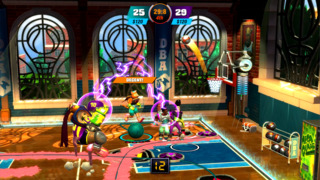
After Andy Hull and I finished Spelunky, I took a break from game development to write a book about its development and Andy began work on Dunk Lords, a fantastical 2v2 arcade basketball game featuring a swole strawberry, a circus strongman, and my favorite character, a cybernetic rockabilly biker named D. Rock. So okay, this is an extra biased pick for my GOTY list, seeing as how my jersey is also hanging on the hallowed walls of Dunk Baby Academy. But the game really does scratch a serious itch for me as someone who has enjoyed many hours of NBA Jam, NFL Blitz, Mutant League Football, NES Ice Hockey, and many other unrealistic sports titles. Like those games, Dunk Lords is great to play with friends (locally), but it also comes with a single-player story mode that is surprisingly extensive for this genre. There’s also a surprising amount to learn--it takes time to figure out how to make use of the numerous techniques at your disposal, from basketball-inspired alley oops and dashes to the wild special moves that give the game a fighting game feel. Not to mention the many items that you can equip between quarters, each one lovingly designed to look and feel unique.
When Andy offered to help me with Spelunky, he had just spent five years as a wooden toy designer, and neither of us had much experience programming console games. I was confident we’d be able to figure it out together, though. As a toy designer, Andy was a hard-working, meticulous, and multi-faceted craftsman, and after our 20+ years as friends, I knew he’d bring that to game-making, as well. Spelunky benefited tremendously from his skills and insight, and in Dunk Lords it’s on full display. Just like Andy himself, the game is much more complex than the cheery exterior might lead you to think!
9. Super Mario Bros. 35
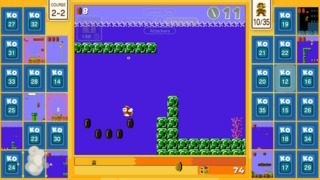
I had a great time with Tetris 99 last year, but I could not, for the life of me, pull off a victory (the closest I got was 2nd place). Thankfully, I’m better at jumping around on blocks than I am at fitting them together, and I thoroughly enjoyed coming out on top in numerous games of Mario 35! If any eSports teams are looking for their next superstar, you know where to find me.
8. Doom Eternal
Like many, I was skeptical of Doom’s 2016 reboot, especially when I saw the up-close glory kills, which felt like they might slow down the game unnecessarily. I cynically assumed they were an attempt to make the “dead simple” gameplay of the originals feel superficially more cinematic. I was wrong, though--yes, they did make the game feel more cinematic, but they also flowed naturally from the gunplay as a type of risk-reward mechanic. Overall, Doom 2016 felt like it captured the feeling of the original games while also moving the series forward in a slightly unconventional direction.
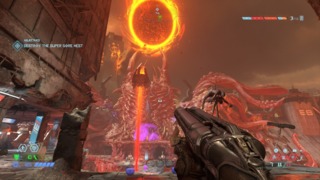
And what Doom 2016 established, Eternal expanded on and refined. I have to imagine that at some point, Marty, Hugo, and rest of the id crew realized that their vision of DOOM had a lot in common with '90s coin-up arcade games and leaned into it--as I flew around the game’s arenas like a murderous acrobat, I felt like I was playing a first-person version of Smash TV taken to its logical conclusion. The 1ups seemed to be an obvious nod to that era of video games and an embrace of the beautiful ridiculousness of this artform. Only in games can it make perfect sense that a demon would spit out armor, ammo, or health depending on how you kill them.
I’m curious to see where the team takes this franchise. On social media I quipped that I hoped to see it go partially off the rails. The Fortress of Doom reminds me of the Sky Palace from ActRaiser… would it be crazy if Doom Guy oversaw the rebuilding of Earth from up on high by alternating between blood-soaked city-building simulator and blood-soaked FPS? One can dream!
7. Pocky & Rocky
I’ve always thought that Pocky & Rocky was a cool game. The characters are adorable, the pixel art is top notch, and the action is smooth and exciting. I never made it further than a few levels in, however! To be honest, growing up I was a pretty undisciplined game player, and I wasn’t really willing to put in the kind of effort required to get through games like Pocky & Rocky. Being forced to replay the same static, linear levels over and over again felt a little too much like practicing the piano or doing Chinese school homework. I loved sampling these types of games, of course, but after hitting the wall a few times, I moved on to something else. It never occurred to me that I should spend more time trying to figure out where I could improve.
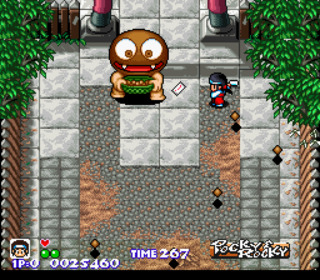
It was that distaste for replaying static levels that partly inspired me to make Spelunky, although, funny enough, it was during the development of that randomized, roguelike-inspired series that I began to develop a real appreciation for good, static level design. I give partial credit for that to the Soulsborne games, which are ostensibly “open-world” games, but have a checkpoint system that forces you to replay sections of them repeatedly (I’ll forget my own name before I forget that run down to the Capra Demon). Once you taste the satisfaction of beating games like that, I’m convinced that it rewires your brain somehow. I give the remaining credit for my conversion to the various speedrunners and hardcore players I’ve spent hours watching on YouTube and Twitch while I worked, whose passion for these types of games has been very inspiring.
And maybe the discipline I had to learn to be a parent and ship the Spelunkies was transferable to playing games, as well. In any case, I applied all of this experience to Pocky & Rocky this year and managed to beat it after all. As the credits rolled, I felt deeply satisfied and thought about all of the game’s distinctive touches that I never noticed before. It was cool to see how it quietly suggests that it’s meant to be cleared on a single credit--by resetting your max heart count when you continue. Spelunky does a similar thing with its secret item chain, and I felt a connection there.
Pocky & Rocky loomed particularly strong in my mind this year because it was announced that Tengo Project is working on a brand new sequel to the game! Tengo Project is a small team within Natsume Atari, composed of Natsume veterans from the 16-bit era. Their previous two releases, Wild Guns Reloaded and The Ninja Saviors, are brilliant remakes of Natsume’s cult classic SNES games that feature some of the most gorgeous pixel art being made in the modern age. Pocky & Rocky, however, will be a full-blown sequel, and I can’t wait. And now I’m truly ready for it!
6. Dungeon Warfare 2
I’m always on the hunt for a mobile tower defense game to play when I need a break. It’s one of my favorite “bag of chips” genres--something to play at those times when I’m too tired to engage with a story or my reflexes. This year, more than ever, I needed a good bag of chips (or jar of nuts, as a healthy alternative). In the past, I’ve enjoyed TD games like Plants vs. Zombies and the Kingdom Rush series. This year, however, I picked up Dungeon Warfare 2, and it might be my favorite one yet?
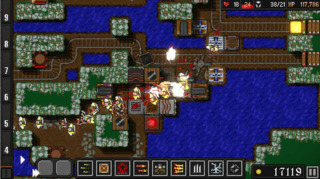
The Dungeon Warfare games are terrifically freeform compared to most other games in the genre. For example, there are distinct levels, and the creeps are guided along set paths initially, but the player is able to divert them during play with barricades. The traps themselves are “physics-based”, which means that creeps can get bunched up into large clumps, only to be shoved, yanked, or launched into pits. Certain types of levels have their own unique hazards that can be used against creeps, like mine carts that come in intervals to run them over. It often feels like you’re designing a torturous Rube Goldberg machine.
Dungeon Warfare 2’s biggest addition is a Diablo-esque loot system where creeps randomly drop items, runes, and even randomized maps of various rarities. In general, the games seem to take little bits from many different tower defense games and RPGs. For example, the theme, where you play as a dungeon lord defending your dungeon, is probably inspired by Dungeon Keeper, and many of the traps are straight out of the Orcs Must Die! series. But these are all good bits that, when put together, come out as something greater than their sum.
(The game is also available on Steam.)
5. Streets of Rage 4
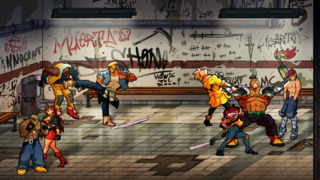
I was skeptical about this game, as well! It’s not often that Western game developers are able to successfully revive an old Japanese franchise, and belt-scrolling beat-‘em-ups are mostly seen as simple button mashers and unfair quarter munchers outside of a relatively small group of enthusiasts (I might think the same thing if I didn’t listen to people who really appreciate the genre). I was worried that the depth of these games would be overlooked in favor of nice graphics and nostalgic references. Streets of Rage, in particular, was a high bar to climb over because the series did such a great job balancing complexity and accessibility.
Thankfully, Streets of Rage 4 has it all--nice graphics, nostalgic references, AND I think it does the original games more than enough justice in terms of tactically-interesting brawling that even newcomers can enjoy. Publisher DotEmu made the right choice pairing Lizardcube’s considerable artistic talent (led by Ben Fiquet) with Guard Crush’s deep understanding of the genre. Both studios are French, and there’s also something extra cool about seeing a French take on a Japanese series set in an American urban environment. The best remakes come from developers that understand and respect the source material but are confident enough to leave their own mark on it.
My daughter has always enjoyed brawlers, as they tend to have the two most important traits of games to her: female playable characters and cooperative play. We’ve credit fed through a lot of the classics, from Alien vs. Predator to The Ninja Saviors, but she’d never played a Streets of Rage game until Streets of Rage 4. Unsurprisingly, she adored the artwork, characters, and action. The game also gave her one of her most exciting video game moments to date: during the boss fight with Max, I Game Over’d before her and exclaimed, “Okay, it’s up to you, now!” “I think we’re going to lose…”, she replied nervously. But in the end, she managed to defeat him with only a sliver of her life remaining. Afterwards, she told me to feel her heartbeat and yeah, it was absolutely racing haha!
Here’s some fan art she did for the game, imagining what Blaze and Cherry might be doing after the exciting finale:
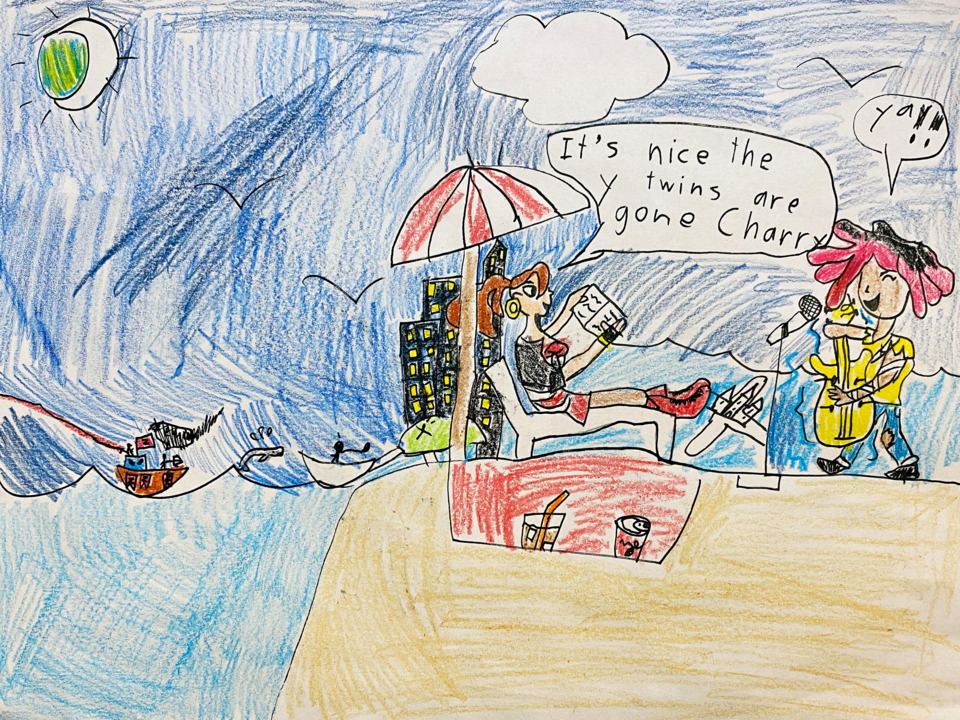
4. Hyrule Warriors: Definitive Edition
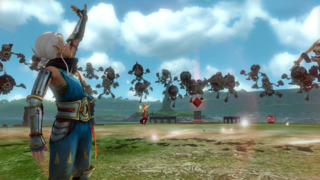
The mainline Mario and Zelda games were so important to me as a kid, but these days, they just don’t get the same kind of love in our house as the side games. Why? Because my daughter is completely uninterested in Mario or Link, especially when they’re rescuing girls. Whether it’s fighting, racing, or partying, she’d much rather play as one of the princesses… or one of the bad guys! It’s true--one of her favorite pretend scenarios features Princess Peach, Princess Zelda, and Lady Palutena teaming up with Bowser and Ganon to give Mario and Link a hard time.
You can see where this is heading! When Hyrule Warriors came to Switch in 2018, it was a bit too complicated and intense for her, but after cutting her teeth on everything from Mario Kart to Streets of Rage, she was ready to tackle her first Musou game. The complexities of managing the strategic and action layers of the game quickly melted away and it wasn’t long before we were blissfully dashing around together as the heroines and villains of the Zelda series, sweeping away swathes of bokoblins, stalchildren, and other mooks. The game really brings a new life to characters that are relegated to narrative-fodder in the mainline Zelda titles. Not only that, but you get to catch and raise fairies! For my daughter, Hyrule Warriors has basically brought her fan fiction to life, and how cool is that?
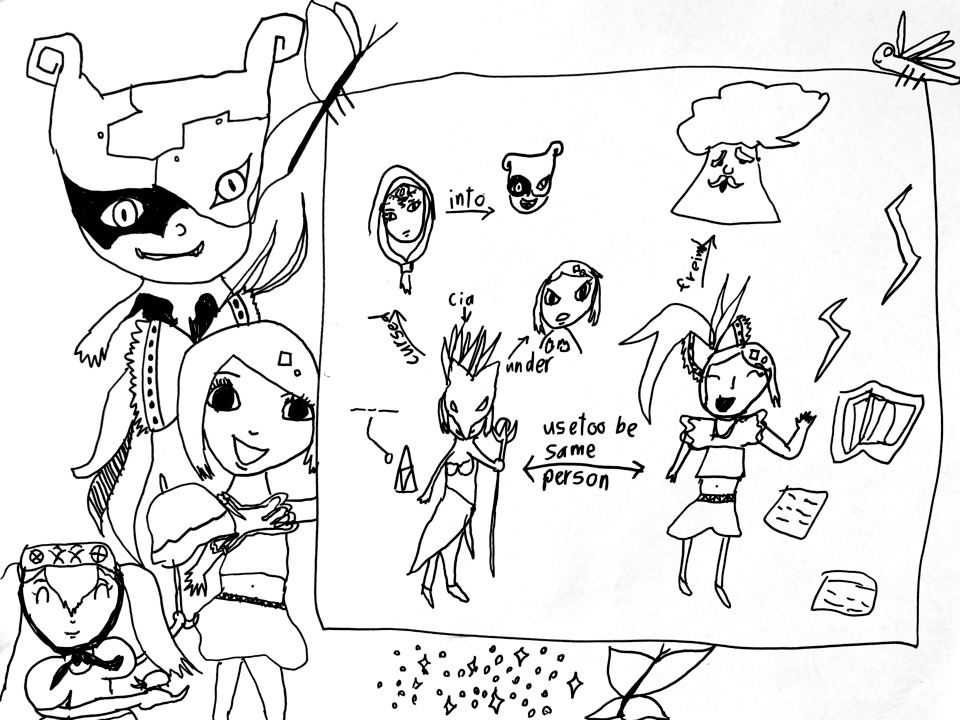
3. Resident Evil 3
I didn’t play much of Capcom’s Resident Evil series until Resident Evil 4. I just couldn’t get over the aesthetics of the early games--the constantly-shifting, fixed camera angles and clunky item management made them seem less scary and more like a chore to play compared to other '90s games, like Castlevania: Symphony of the Night. It wasn’t until RE4 introduced its revolutionary third-person combat system that I felt compelled to play through an RE game (and I loved it, of course). But was this SURVIVAL horror? The theme was horror, for sure, but it felt more like an action game.
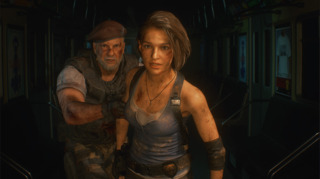
Then I played last year’s Resident Evil 2 remake, and I understood what “survival horror” meant down to my bones… freed from 1998’s hardware limitations, the dark, claustrophobic hallways of Raccoon City’s police department felt like they were miles long, and the balance and pacing were superb. I marveled at how many times I’d deplete my ammo and think that all was lost, only to find a few more bullets in the next room. In my opinion, it was a horror experience better than Hollywood could provide (and I do enjoy my horror movies).
Whereas RE2 remake was universally praised, RE3’s remake received more of a mixed reaction. And I agree that as a standalone game it wasn’t quite as fascinating as RE2. It was a little more Aliens than Alien--still extremely well-made, with plenty of scares, but less of that psychological tension that made the first game so compelling. As a sequel and companion to RE2, however, I thought Resident Evil 3 was great, and it was all I really wanted from the first AAA game I played through after releasing Spelunky 2. Without getting too spoilery, defeating the main antagonist of the game felt like a metaphor for finishing off a protracted game development. It was cathartic.
Now I’m working through Resident Evil VII, which is another interesting sidestep in the series’ evolution, and greatly looking forward to Village in 2021 (hopefully?). So I think I can safely call myself a big fan. If you’re also a fan, I highly recommend the Archipel minidocumentary about the series’ creator, Shinji Mikami.
2. WebLiero
In the '90s and early 2000s, I was constantly on the lookout for fun little freeware games on sites like Home of the Underdogs and GameHippo. That’s probably how I came across Joosa Riekkinen’s Liero, a 1v1 deathmatch game with per-pixel destructible terrain and physics. In Finnish, “liero” means “worm”, but the game was more directly inspired by another freeware game, MoleZ, than the game it’s more superficially similar to, Worms. As a cult classic in the freeware scene, Liero would, in turn, go on to inspire some other great indie games like Noita (Finnish for “witch”) and Soldat.
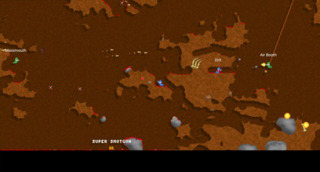
I had two good friends who I played Liero with all the time growing up: Jon Perry (a fellow game developer who I’ve made several games with) and our classmate “Mad Dog”. After graduating high school, we all moved to different parts of the US, but whenever we got together, we’d try to fit in some games of Liero because, despite its age, there’s still nothing else really like it. In most deathmatch games, the arena is static, but in Liero you’re forced to adapt to rapid and organic changes to the environment, as unique weapons like larpas and chiquita bombs chew up the dirt. The physics are also sublime--both your worm and its projectiles have a nice heft to them and once you become adept with the game’s sole movement enhancement, the ninja rope, you can pull off trick shots that feel incredibly satisfying.
Despite being a niche game, Liero has been kept alive by a devoted community of fans who have dutifully preserved it in its classic form, as well as extended it with various mods and forks. Last year, a game developer by the name of Mario “Basro” Carbajal released what is, at least to me and my friends, the most important version of Liero yet: WebLiero, a browser-based port that allows anyone to easily challenge anyone else over the internet. Finally, we could all play Liero at any time, from anywhere… and we have! We taught another friend, “DrX”, how to play and together, the four of us have been meeting up once a week in WebLiero to play for a few hours and catch up with one another. This weekly WebLiero session has been such a welcome distraction during the most stressful parts of the pandemic and work that it’s hard to imagine this year without it.
Strangely enough, it seems like the majority of Liero’s current players enjoy playing it as a much faster-moving, twitchy game, with more powerful weapons and pre-built, mostly static arenas. But call us old-fashioned, my friends and I still strongly prefer the classic game (also known as 1.33). These new mods are fun but rob Liero of a lot of what makes the game unique, in our opinion. So if you try the game out, make sure you try playing it both ways to see which way feels the best to you.
1. Animal Crossing: New Horizons
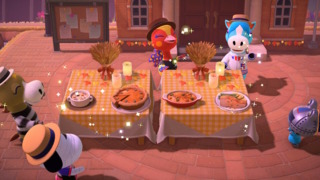
I loved playing this game with my family this year. Some highlights include: laughing at each other trying and failing to catch tarantulas, chasing each other around in improvised games of tag, and dressing up for photoshoots. It brought me great joy to do some work on “Happy Isle” late at night and see my daughter’s reaction to it when she played the next day. Also, between reading dialogue, writing letters, counting bells, talking to Blathers, and making her own custom designs, it feels like she should get school credits from playing it.
Other than that, there’s probably not too much more I could say about THIS game during THIS year that hasn’t already been said. It’d be a great game any other year, but it felt like a necessary one for 2020 in particular.
